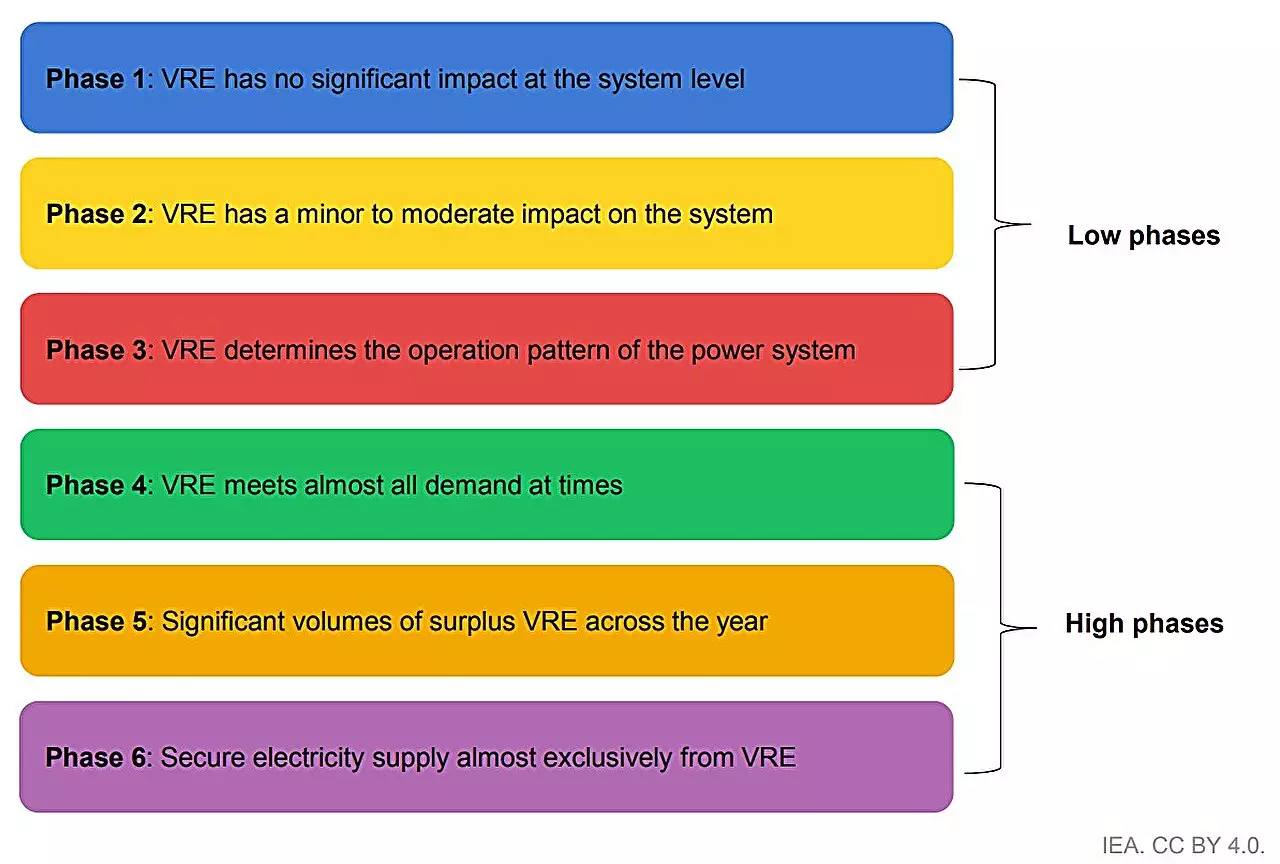The rapid growth in solar photovoltaic (PV) and wind energy generation has emerged as a pivotal aspect of today’s energy landscape. According to a recent report by the International Energy Agency (IEA), the past few years have seen the global capacity for these renewable sources more than double, reflecting not only the technological advancements that have rendered them more cost-effective but also the proactive governmental policies aimed at promoting clean energy. However, as nations rush to embrace these resources, a significant challenge looms: the need for effective integration into existing power systems. Without this integration, the potential benefits of renewable energy could be severely diminished, as highlighted by the IEA’s cautionary insights.
To fully harness the potential of solar and wind energy—especially as decarbonization becomes an urgent global priority—policymakers must prioritize integration initiatives. The IEA report emphasizes that the early implementation of supportive measures is critical; delay could result in substantial reductions in expected benefits by 2030, including a significant decrease in electricity generation from renewable sources. Renewable energy’s role in achieving global emission reduction goals cannot be overstated, with solar PV and wind accounting for a majority of anticipated carbon dioxide reductions in the electricity sector. This necessity for integration highlights the intersection between effective policy frameworks and technological advancements.
The IEA’s report features an unprecedented global stocktake of integration measures across fifty power systems, representing roughly 90% of current solar PV and wind generation worldwide. This evaluation offers invaluable insights into how countries can enhance their renewable energy markets without overhauling their entire energy infrastructure. For countries with lower shares of variable renewable energy in their power mix, as well as those actively pursuing renewable targets, the report suggests that modest enhancements—from improving forecasting methods to increasing the flexibility of existing assets—could substantially facilitate expansion. This tailored approach counters the notion that sweeping changes are always necessary, providing a roadmap that is both practical and achievable.
Although initial steps for integrating renewable energy are relatively straightforward for many countries, heightened levels of solar and wind penetration reveal a more complex set of challenges. Power systems in leading nations, such as Denmark and South Australia, have demonstrated an ability to navigate these hurdles successfully. Solutions like energy storage systems and innovative power grid technologies have proven effective in maintaining stability and managing the intermittency of renewable outputs. As these frontrunner systems blaze a trail, they offer a crucial learning opportunity for other countries looking to enhance their own renewable energy portfolios.
One encouraging aspect highlighted in the IEA report is that many of the technological solutions required to address integration challenges are either fully developed or approaching maturity. The transition from the traditional planning and operational models to ones accommodating higher levels of variable renewables will demand a shift in mindset. Essentially, countries must engage in proactive planning and policy amendments that reflect the realities of a rapidly changing energy environment. The success of integrating variable renewables relies more on regulatory frameworks and less on awaiting groundbreaking technological innovations.
The IEA’s report serves as both a wake-up call and a guide. It underscores the urgency of immediate and effective action to support the integration of renewable energy sources into power systems. The world is at a pivotal point, with renewable energy poised to significantly contribute to emissions reductions and energy security. However, it is imperative that governments, industry stakeholders, and technologists collaborate to ensure that the insights drawn from leading power systems inform global strategies. Only then can we fully embrace a future defined by clean and sustainable energy sources, laying the groundwork for a secure and decarbonized world.


Leave a Reply